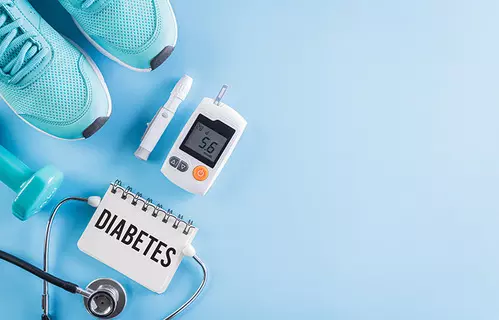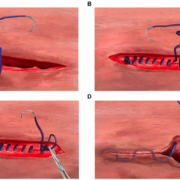
Early-onset gastrointestinal (GI) cancers are rising at alarming rates worldwide and, in the U.S., are increasing faster than any other type of early-onset cancer, including breast cancer, according to two recent literature reviews from Dana-Farber Cancer Institute.
“Early-Onset Gastrointestinal Cancers: A Review,” published today in JAMA, provides a comprehensive analysis of the incidence, risk factors, and treatment approaches for early-onset GI cancers. Authors note the rising rate goes beyond colorectal cancer to include gastric, esophageal, and pancreatic cancers, among other less common GI malignancies. Early-onset GI cancer is typically defined as GI cancer diagnosed in adults younger than 50 years.
“Colorectal cancer is the most common early-onset GI cancer worldwide, accounting for more than half of the cases, but it is not the only GI cancer that is rising in younger adults. Unfortunately, pancreatic, gastric, and esophageal cancers are also increasing in young people,” said Dr. Kimmie Ng, senior author of the review and director of the Young-Onset Colorectal Cancer Center at Dana-Farber. “The rising incidence of early-onset GI cancers is alarming and underscores the need for enhanced prevention strategies and early detection methods.”
Of the GI cancers highlighted in the review, colorectal cancer is the only one currently with recommended screening guidelines for average-risk individuals in the U.S. Still, Dr. Ng says despite recommendations to begin colorectal cancer screening at age 45 for average-risk individuals, fewer than 1 in 5 (19.7%) U.S. adults aged 45 to 49 were screened in 2021, indicating a significant gap in early detection efforts.
“Screening adherence is absolutely critical,” says co-author Dr. Thejus Jayakrishnan, also of Dana-Farber. “We have strong evidence that colorectal cancer screening saves lives by reducing both the number of people who develop colorectal cancer and the number of people who die from it. Each missed screening is a lost opportunity to detect cancer early when it is more treatable, or to prevent cancer altogether by identifying and removing precancerous polyps.”
Steepest rise seen in youngest age groups: British Journal of Surgery review
The number of newly diagnosed cases of early-onset GI cancers rose by 14.8 percent between 2010 and 2019, noted a similar review published earlier this month in the British Journal of Surgery. The review notes the rise in early-onset cases disproportionately affects people who are Black, Hispanic, of Indigenous ancestry, and women.
Dr. Ng is senior author of that review. Dr. Sara Char, of Dana-Farber, and Catharine O’Connor, a medical student at Harvard Medical School, are co-first authors.
The count of early-onset GI cases is highest in the oldest group – people aged 40 to 49 – but the rise in rates is progressively steeper in younger groups. For example, people born in 1990 are twice as likely to develop colon cancer and four times as likely to develop rectal cancer compared to those born in 1950, according to the authors.
The authors also note that recent data from the Centers for Disease Control and Prevention (CDC) indicated a more than tripling of the incidence of colorectal cancer in people aged 15 to 19 and a near doubling in people aged 20-24.
Reviews offer comprehensive look at risk factors, treatment, and prognosis
Together, these two review papers observe several common risk factors associated with early-onset GI cancers. Modifiable lifestyle factors listed as significant contributors to the development of these cancers include obesity, poor diet, sedentary lifestyle, smoking, and alcohol consumption.
Nonmodifiable factors include family history and hereditary syndromes like Lynch syndrome. The JAMA review found 15% to 30% of these cancers have pathogenic germline variants, indicating a hereditary predisposition to developing cancer. Both reviews emphasize the importance of genetic testing for all patients with early onset GI cancers to assess familial risk of cancer and to guide treatment.
Treatment approaches for early-onset GI cancers are similar to those for later-onset cases, and may involve chemotherapy, surgery, and radiation, depending on the stage of the cancer. However, both papers found that patients with early-onset cancers often receive more aggressive treatment but may have similar or shorter survival rates compared to older patients.
The authors advocate for the establishment of specialized centers with multidisciplinary teams to support patients with early-onset GI cancers, addressing unique challenges such as fertility preservation, parenting, and psychosocial distress.
“Taken together, these two reviews are a call to action for further research on why rates of GI cancers are increasing in younger adults,” said Ng. “There is currently limited data available, especially in pancreatic, gastric, and esophageal cancers. This comprehensive look at what data exist can help raise education and awareness which is important because as a collective group, digestive system cancers account for a significant proportion of cancer-related deaths in younger adults in the U.S. and around the world.”
Reference:
Jayakrishnan T, Ng K. Early-Onset Gastrointestinal Cancers: A Review. JAMA. Published online July 17, 2025. doi:10.1001/jama.2025.10218




















